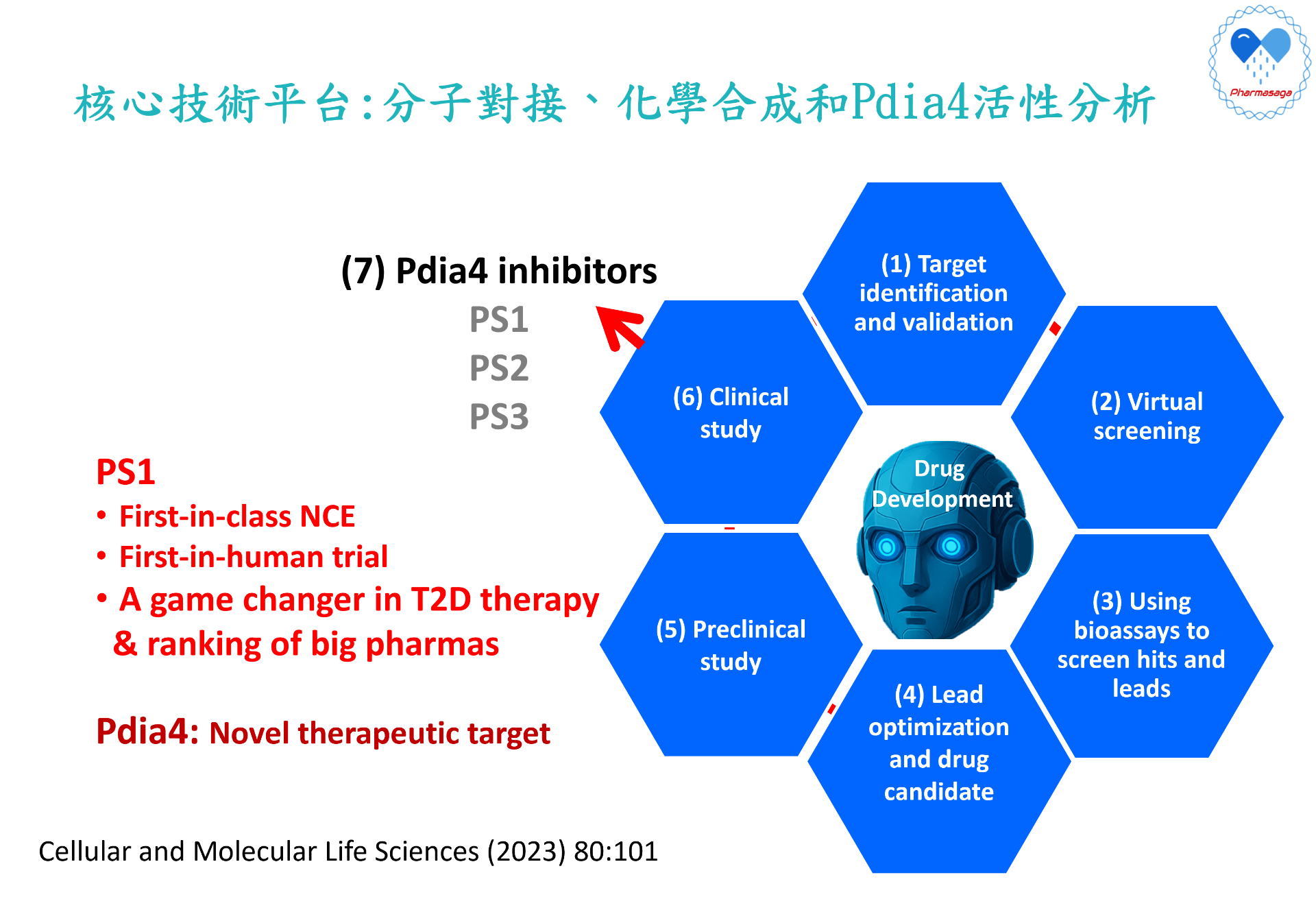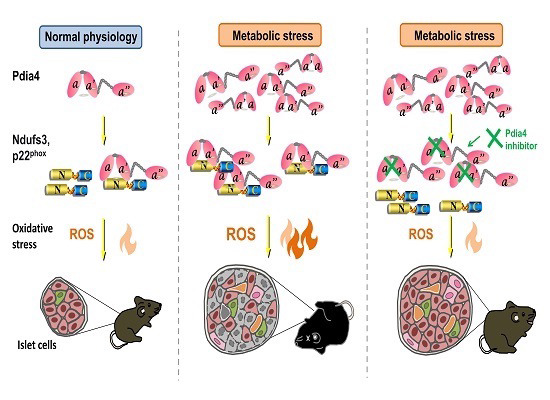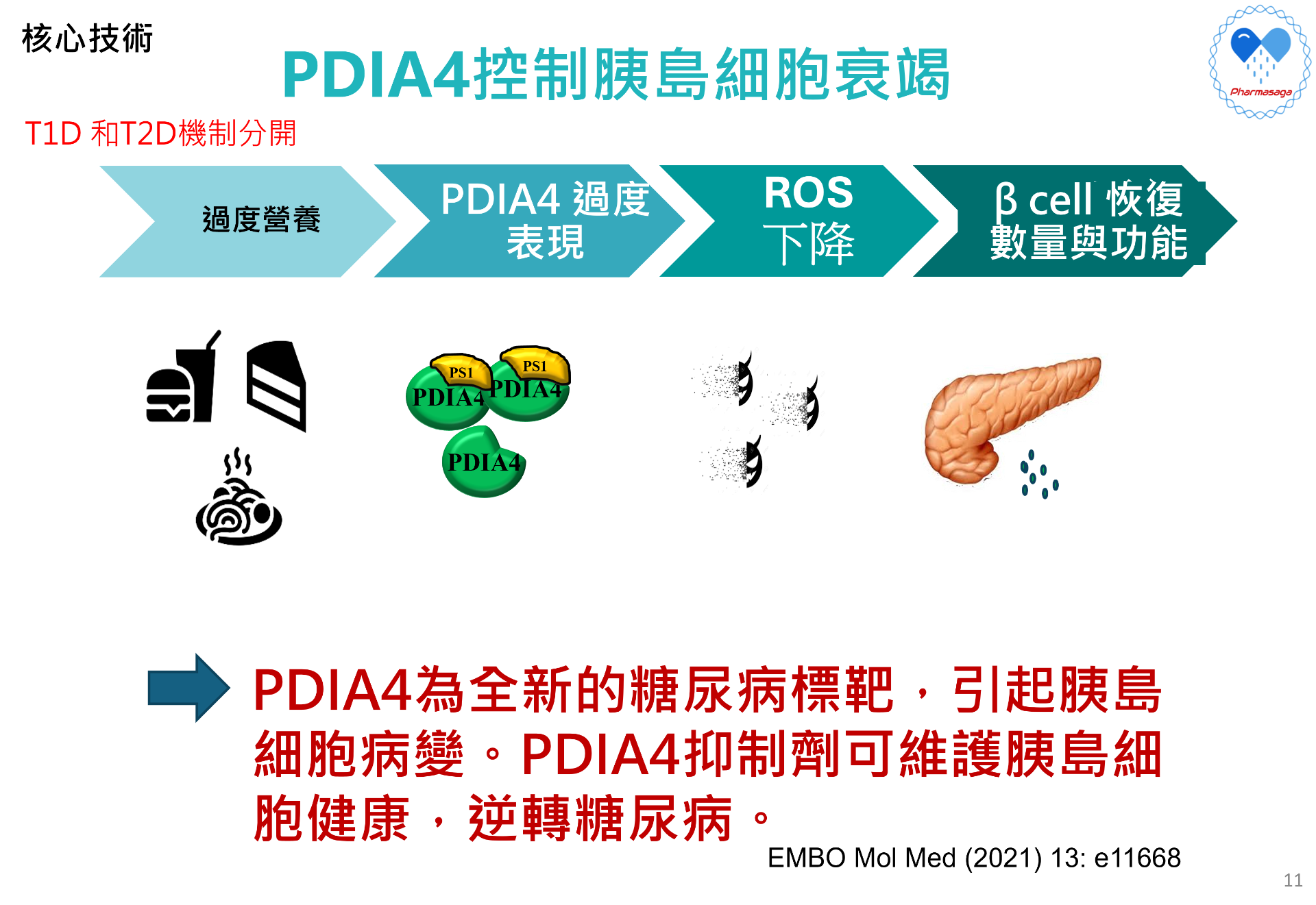Core Technology

Academia Sinica first discovered and identified a novel diabetes target, Pdia4, which regulates pancreatic islet cell failure and diabetes. Utilizing a Molecular Docking technology platform for screening, a lead compound to inhibit Pdia4 was identified from hundreds of compounds. After a series of optimization and screening, PS-001 was selected as the drug candidate for development, positioning it to become a first-in-class small-molecule drug in the diabetes market. The company has obtained the global exclusive license for the aforementioned technology from Academia Sinica, establishing it as the company's core technology for drug development.
(Figure 1). The mechanism of action for Pdia4 is as follows (Figure 2)
(Figure 2)
Pdia4 Negatively Regulates Pancreatic Islet Cell Pathogenesis.
Under normal physiological conditions, islet cells express a minimal amount of Pdia4, generating basal levels of Reactive Oxygen Species (ROS), and both the number and function of islet cells are normal. Excessive nutrition (metabolic stress) increases Pdia4 expression, leading to the production of excessive ROS. This, in turn, causes islet cell failure and leads to the onset of diabetes.
PS-001 inhibits Pdia4 activity, which suppresses the production of ROS, prevents islet cell failure, and reverses diabetes (as reported in EMBO Mol. Med. (2021) e11668).


(Figure 3)
PDIA4 Controls Pancreatic Islet Cell Failure
Under conditions of prolonged over-nutrition, patients develop diabetes and insulin resistance. Pancreatic islet cells are forced to secrete more insulin to maintain stable blood sugar levels, gradually leading to the death of the islet cells. The mechanism behind this process was previously unclear.
Dr. Wen-Ching Yang, a research fellow at Academia Sinica, has been studying the application of Bidens pilosa (known in Chinese as Xian Feng Cao) in diabetes for many years. He discovered that prolonged over-nutrition causes the PDIA4 protein level to rise in islet cells, leading to an increase in oxidative stress and free radicals, which results in the death of islet cells.
Consequently, he designed the small-molecule inhibitor PS1 to target and suppress the PDIA4 protein, thereby preventing islet cell death and restoring their function.
This represents a fundamental cure: PS1 inhibits PDIA4 to prevent islet cell death, and combined with existing islet stem cells allowing for islet regeneration, this has the potential to reverse diabetes.
